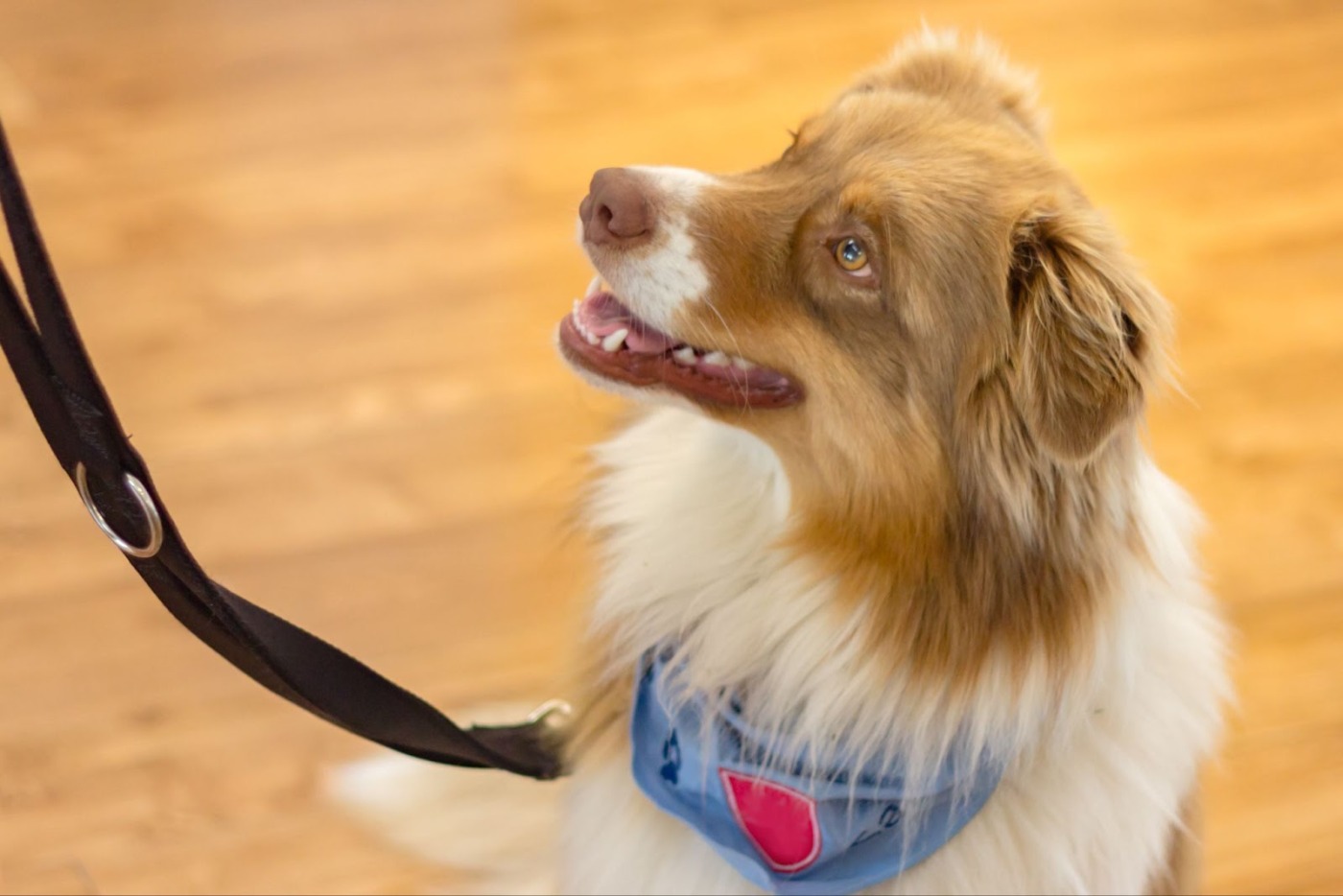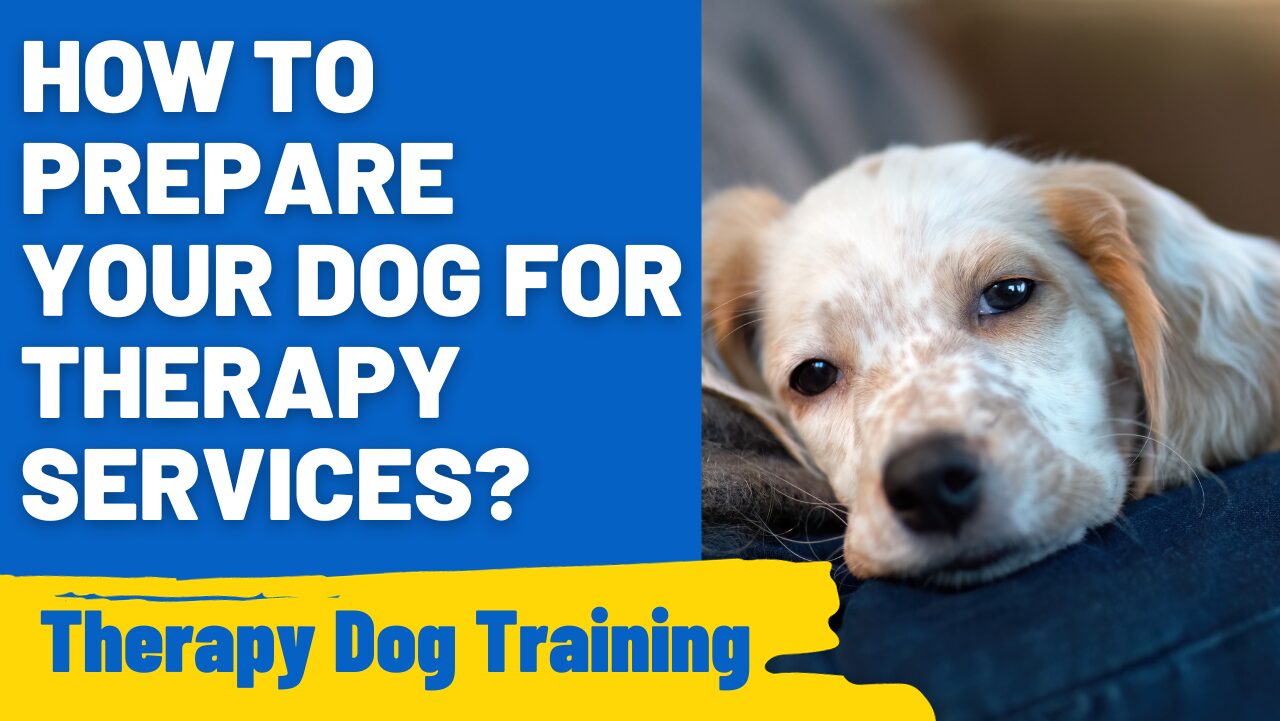How to make your dog a therapy dog is a question that often arises among dog owners who see the incredible potential in their furry friends to provide comfort and support to those in need.
Dogs possess an extraordinary ability to offer solace and companionship in various settings. Therapy dogs, specifically trained companions, bring joy and comfort to hospitals, schools, nursing homes, and more.
This guide will take you through the steps involved in dog training for therapy work—transforming your loving pet into a certified therapy dog.
What Makes a Good Therapy Dog?
For a therapy dog, character matters more than breed. While certain breeds, like Golden Retrievers or Labradors, often possess the right temperament, any dog with the right temperament and training can excel in therapy work.
Critical qualities include patience, friendliness, and an innate ability to connect with people. A dog’s temperament sets the tone in therapeutic settings, providing comfort and ease.
Identifying Your Dog’s Suitability
Assessing your dog’s suitability for therapy work involves observing their personality.
Temperament tests and evaluations help gauge their comfort around new people, adaptability in different environments, and overall sociability. Look for signs of friendliness, adaptability, and a natural inclination to interact with people.
Understanding therapy dog requirements and integrating companion dog training are crucial in recognizing the traits that suit a dog for this fulfilling role.
How Do I Start the Training Process for My Dog?
Getting your dog ready for therapy work begins with teaching essential obedience and socialization skills. This is the groundwork for service dog preparation and emotional support dog training, setting the stage for their role in assisting others.
Basic Obedience Training
Service dog preparation starts with foundational obedience commands like sit, stay, come, and more. These commands establish discipline, which is vital for assisting and supporting others.
Emotional support dog training begins with fostering a strong connection between you and your pup, built on trust and mutual respect. This connection lays the groundwork for successful training sessions.
Socialization Skills
Dog behavior training for therapy is incomplete without effective socialization. It goes beyond meeting people and animals—it’s about exposing them to diverse environments, crucial for their adaptability and composure in therapy settings.
Introducing your furry companion to various places, experiences, and different groups of people shapes their understanding of social cues. This preparation is fundamental for their role as a compassionate therapy dog.
Emotional support dog training is more than obedience—it nurtures your dog’s emotional intelligence and reinforces positive behaviors, making them an empathetic and supportive presence during therapy sessions.
What Does Canine Therapy Training Involve?
Training dogs for therapeutic service isn’t just about teaching your furry friend tricks. It’s a specialized preparation that equips dogs with the unique abilities to provide therapeutic services.
Here’s a closer look at what this training encompasses:
- Managing Distractions: Dogs learn to stay focused amidst various distractions, staying attentive to their role of providing comfort.
- Adapting to Settings: Training involves exposure to diverse environments, and teaching dogs to behave appropriately in hospitals, nursing homes, and schools.
- Interacting with People: They’re trained to engage with different groups, supporting individuals of all ages.
Specialized Skills for Therapy Dogs
Beyond the basics, therapy dogs undergo advanced training to refine their skills in providing emotional support. Here are some specialized skills they acquire:
- Recognizing Emotional Cues: Dogs are trained to pick up on emotional signals in those they interact with.
- Responsive Support: They’re taught to respond appropriately, offering comfort through gentle actions or simply being a calming presence.
Canine therapy training nurtures dogs to connect, understand emotions, and provide invaluable support, enriching lives through compassion and empathy.
Understanding Certification for Therapy Dogs
Embarking on therapy dog training? A critical step is getting your furry friend certified.
Therapy dog certification confirms that your dog has the right temperament and training to provide comfort in various settings. Each certification program has its criteria and fees, so choosing one that fits your goals is essential.
Here’s a quick comparison of some popular therapy dog certification programs:
| Program Name | Therapy Dogs International | Pet Partners | Alliance of Therapy Dogs |
| Criteria | Minimum age of 1 year, health check, obedience training, temperament test | Health screening, handler’s course, assessment, on-site evaluation | Minimum age of 1 year, controlled temperament, health certificate, the handler must be 18+ |
| Testing Description | One Evaluation | Online Course + One Evaluation | One Evaluation + Three supervised visits |
| Testing Fee | Varies | Varies | $0 |
| Initial Fees | $45 | $130 | $60 |
| Renewal Fee w/1 Pet | $30 | $35 | $30 |
| Renewal Term | Annually | Every 2 years (Rates annualized) | Annually |
Choosing the right program for your therapy dog can make all the difference. It’s about finding the best fit for both of you and ensuring your dog is ready to bring joy and comfort to those in need.
Where to Find Professional Therapy Dog Training?
Are you aiming to train your furry friend for therapy work? Seeking professional therapy dog training could be the key. These specialized programs or trainers offer tailored guidance, honing in on the essential skills and demeanor required for therapy settings.
When seeking professional trainers or programs for therapy dog preparation, focus on crucial aspects:
- Experience: Look for trainers with ample experience in therapy dog training.
- Specialization: Choose trainers specifically skilled in therapy dog preparation.
- Client Testimonials: Check for positive client reviews to gauge effectiveness.
- Training Approach: Ensure trainers use positive reinforcement techniques.
- Facilities: Assess available space and resources for holistic training.
- Availability and Cost: Confirm scheduling aligns and consider value for cost.
You can find a qualified trainer or program for your dog’s therapy training needs by prioritising these aspects.
DIY vs. Professional Training

To help you decide whether to go on DIY training or choose professional training here’s a quick comparison of their pros and cons:
| Aspects | DIY Training | Professional Training |
| Pros | Bond Building: Strengthening your bond. | Expert Guidance: Specialized knowledge & experience. |
| Flexible Schedule: Training at your own pace. | Structured Training: Follows a systematic approach. | |
| Cost-effective: Budget-friendly approach. | Higher Success Rate: Improved outcomes typically. | |
| Cons | Limited Expertise: Lack of specialized knowledge. | Cost Consideration: Potential higher investment. |
| Potential Mistakes: Errors may slow progress. | Schedule Dependency: Structured session schedules. | |
| Time-consuming: Longer time to achieve readiness. | Less Personal Involvement: Reduced hands-on approach. |
Choosing between DIY and professional therapy dog training depends on various factors. Each approach has its perks, so opt for what suits your and your dog’s needs best, whether personalized training at home or seeking professional expertise.
The Legal and Emotional Responsibilities of a Therapy Dog Owner
Owning a therapy dog means shouldering legal duties like understanding public access rights and following certification guidelines. But it’s not just about rules—it’s about emotions, too.
Emotional support dog training is vital. It’s not just about teaching your dog to comfort others; it’s about ensuring they’re emotionally cared for. Dogs sense emotions, and this training helps them handle the feelings they encounter during therapy sessions.
Your dog absorbs the vibes around them. So, creating a safe space for their emotions during therapy and everyday life is vital. Balancing legal obligations with nurturing your dog’s emotional well-being makes this journey incredibly fulfilling.
Maintaining Your Therapy Dog’s Training and Well-being
Once you’ve embarked on making your dog a therapy dog, it’s crucial to sustain their training and overall well-being. Here’s how:
Continued Training and Enrichment
- Keep Learning Together: Regular practice sessions help maintain their therapy skills and introduce new ones. Short, consistent training keeps their abilities polished.
- Engaging Activities: Stimulate their mind and body with fun activities like puzzle toys, such as Hide’n’Treat, and agility exercises. These keep your dog sharp and happy.
Health and Wellness
- Regular Vet Check-ups: Keep up with vet visits to catch any health issues early. Vaccinations and overall health assessments are crucial.
- Balanced Diet and Exercise: Consult your vet for a diet that suits your dog’s needs and ensure regular exercise suits their breed and energy levels.
By following these tips, you’ll maintain your dog’s training and ensure they’re healthy and ready to bring joy and comfort to those in need.
Conclusion
Embarking on the journey to train your dog as a therapy dog is more than just teaching commands. It’s about forging an unbreakable bond and creating a positive impact. Seeing your furry companion bring joy and support to others is priceless, enriching both their life and the lives they touch.
Training your dog for therapy work is fulfilling, demanding dedication, patience, and love. Each step you take together strengthens your extraordinary connection. Get ready to witness your dog’s compassion as they become a beacon of comfort and hope to those in need.
Level Up Your Dog’s Therapy Training with HoundGames!
Ready to transform your dog into a therapy dog?
Enhance their training with HoundGames’ expertly crafted interactive dog toys! Our toys, designed by veterinarians and dog experts, engage smart dogs and enrich their minds between training sessions.
Explore our range of puzzle toys—perfect for smart dogs gearing up for therapy work. Visit www.houndgames.com now and prepare your furry friends to spread joy and comfort wherever they go.




